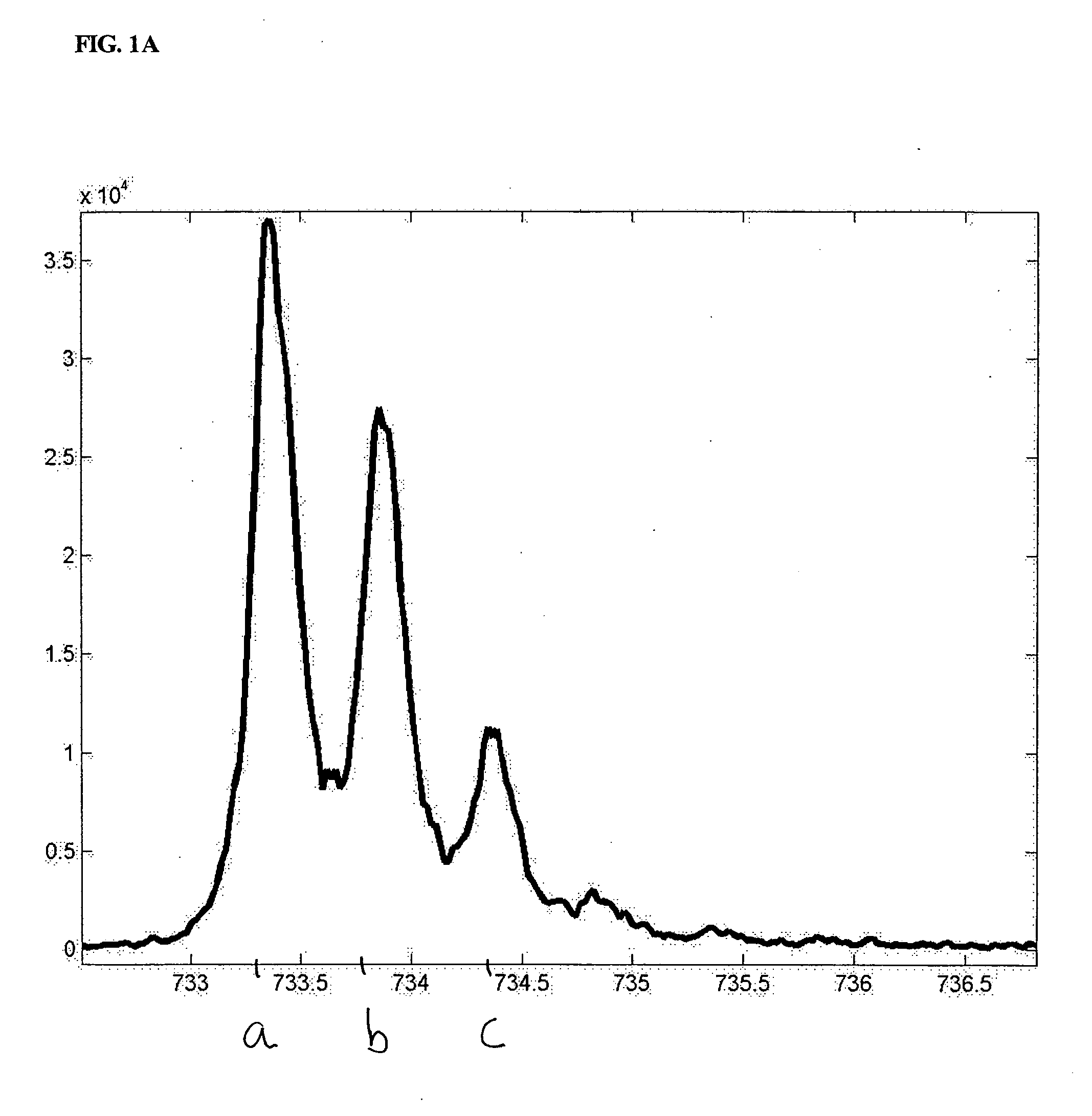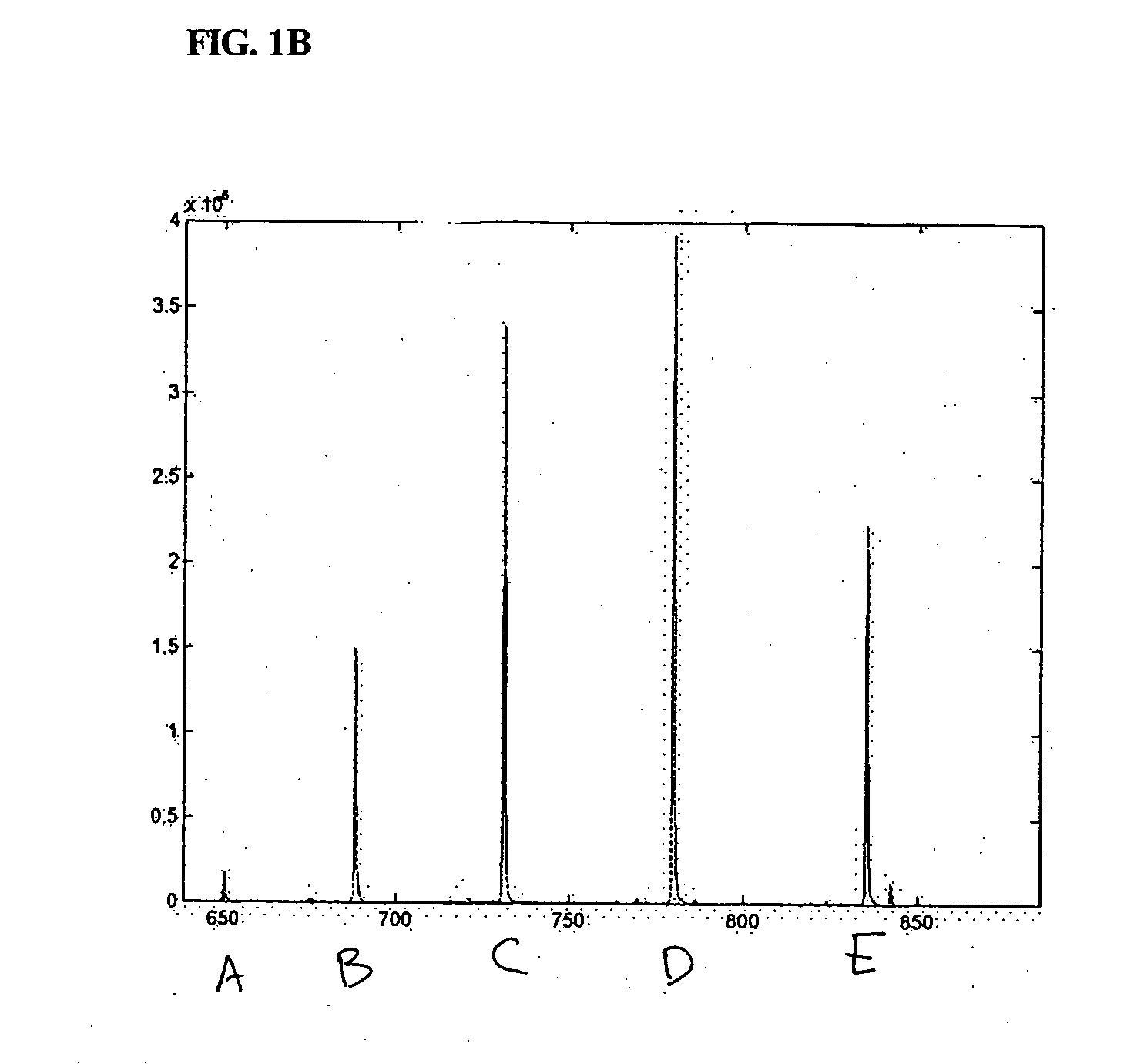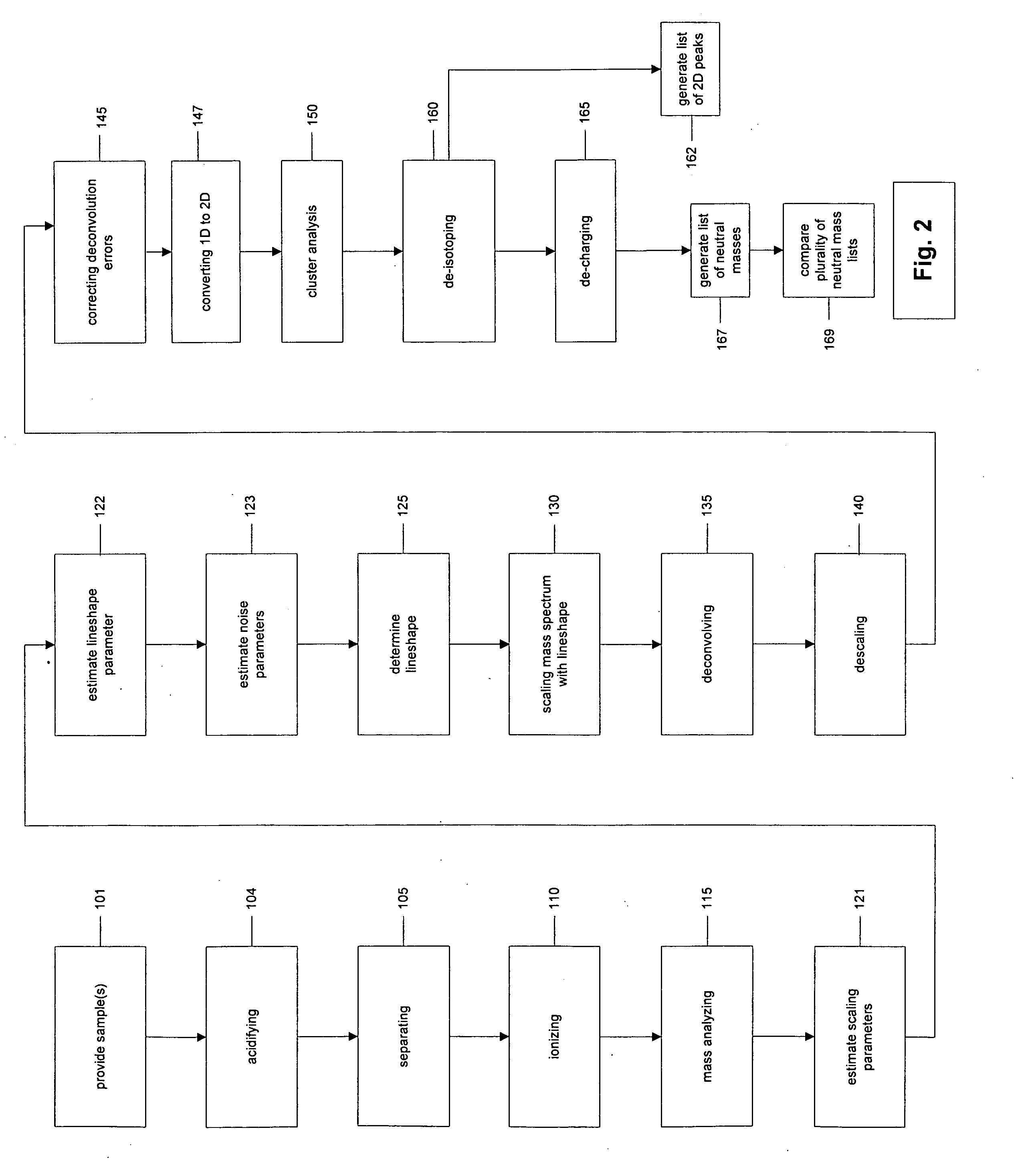Methods for accurate component intensity extraction from separations-mass spectrometry data
a mass spectrometry and component intensity technology, applied in the field of proteomics, can solve the problems of affecting the accuracy of component intensity extraction, so as to achieve accurate analysis of data and distinguish one charged molecule from another
- Summary
- Abstract
- Description
- Claims
- Application Information
AI Technical Summary
Benefits of technology
Problems solved by technology
Method used
Image
Examples
second embodiment
[0046] In a second embodiment, a lineshape u is calculated by combining physical derivation of the lineshape with statistical estimation of unknown features of the lineshape. In this approach, physical derivation may leave some features of the lineshape unspecified, such as a reference width, tail shape, or other features. The unspecified features may be estimated by statistically fitting u to a selected subset of single peaks or isotopic peak clusters. A useful analogy for this approach is estimation of standard statistical distributions such as a normal distribution where the mean and variance are estimated from data; the distribution is specified as a parametric envelope with parameters to be estimated from data. Here the lineshape is derived as a parametric envelope from understanding of the mass spectrometer, with some parameters to be estimated from data.
[0047] For a given set of parameters for the lineshape and parameters for the locations and intensities of the subsample of ...
third embodiment
[0048] In a third embodiment a lineshape u is determined completely from raw data by relying exclusively on statistical estimation of the lineshape using flexible non-parametric methods for estimation of arbitrary distribution functions. This method omits physical derivation of any aspects of the lineshape, and the three methods specified here represent a spectrum from completely physical derivation to combined physical and statistical estimation to completely statistical estimation. To estimate u completely statistically, flexible functional forms such as smoothing splines, B-splines, thin plate splines, piecewise polynomials, and mixtures of distributions may be used.
[0049] The lineshape can be considered a multiple of a probability density function. The methods of the last paragraph can be used to estimate either the probability density function or the logarithm of the probability density function. Each of these methods involves parameters to be estimated, and some involve smooth...
PUM
| Property | Measurement | Unit |
|---|---|---|
| molecular weight | aaaaa | aaaaa |
| molecular weight | aaaaa | aaaaa |
| molecular weight | aaaaa | aaaaa |
Abstract
Description
Claims
Application Information
 Login to View More
Login to View More - R&D
- Intellectual Property
- Life Sciences
- Materials
- Tech Scout
- Unparalleled Data Quality
- Higher Quality Content
- 60% Fewer Hallucinations
Browse by: Latest US Patents, China's latest patents, Technical Efficacy Thesaurus, Application Domain, Technology Topic, Popular Technical Reports.
© 2025 PatSnap. All rights reserved.Legal|Privacy policy|Modern Slavery Act Transparency Statement|Sitemap|About US| Contact US: help@patsnap.com



